-
 Bitcoin
Bitcoin $83,407.2371
-1.63% -
 Ethereum
Ethereum $1,823.1395
-3.06% -
 Tether USDt
Tether USDt $0.9997
-0.02% -
 XRP
XRP $2.0473
-2.23% -
 BNB
BNB $600.1100
-0.49% -
 Solana
Solana $119.7021
-3.88% -
 USDC
USDC $0.9998
-0.01% -
 Dogecoin
Dogecoin $0.1648
-3.39% -
 Cardano
Cardano $0.6519
-2.39% -
 TRON
TRON $0.2368
-0.66% -
 Toncoin
Toncoin $3.8129
-4.99% -
 UNUS SED LEO
UNUS SED LEO $9.3898
-0.23% -
 Chainlink
Chainlink $13.1549
-4.15% -
 Stellar
Stellar $0.2637
-1.07% -
 Sui
Sui $2.4035
1.65% -
 Avalanche
Avalanche $18.5674
-3.45% -
 Shiba Inu
Shiba Inu $0.0...01232
-0.30% -
 Hedera
Hedera $0.1654
0.03% -
 Polkadot
Polkadot $4.0578
-0.51% -
 Litecoin
Litecoin $82.9613
0.22% -
 MANTRA
MANTRA $6.3104
1.76% -
 Bitcoin Cash
Bitcoin Cash $301.4958
-1.14% -
 Bitget Token
Bitget Token $4.5444
-0.98% -
 Dai
Dai $0.9999
-0.01% -
 Ethena USDe
Ethena USDe $1.0000
0.02% -
 Pi
Pi $0.6681
-3.26% -
 Hyperliquid
Hyperliquid $12.3441
-5.68% -
 Monero
Monero $216.6690
-0.88% -
 Uniswap
Uniswap $5.9832
-2.69% -
 Aptos
Aptos $5.2233
-0.17%
Analysis of the decision-making mechanism of decentralized autonomous organizations (DAO)
DAOs use diverse voting methods like majority, weighted, and quadratic voting, each affecting decision-making differently based on token distribution and community engagement.
Mar 31, 2025 at 04:49 pm
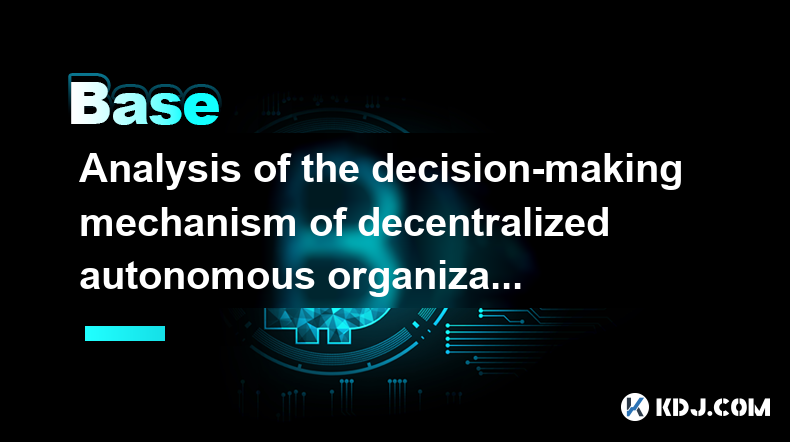
Understanding DAO Governance
Decentralized Autonomous Organizations (DAOs) represent a novel approach to organizational structure, leveraging blockchain technology to eliminate the need for centralized authority. Their decision-making processes, however, are diverse and complex, varying significantly based on the specific DAO's design and implementation. This analysis explores the core mechanisms governing these decisions.
Voting Mechanisms: The Cornerstone of DAO Governance
The most prevalent method for DAO decision-making is voting. Different voting mechanisms exist, each with its strengths and weaknesses. Simple majority voting, where proposals pass if more than 50% of voters approve, is straightforward but susceptible to manipulation by large stakeholders. Weighted voting assigns voting power proportionally to token holdings, potentially leading to imbalances. Quadratic voting allows individuals to cast multiple votes, but with diminishing returns, aiming to amplify the voices of smaller stakeholders. Each system presents unique challenges and benefits depending on the DAO's goals and community structure.
Tokenomics and Governance Tokens
The role of governance tokens is central to most DAO decision-making processes. These tokens grant holders voting rights, often weighted proportionally to their token holdings. The token's distribution, vesting schedules, and inflation mechanisms significantly impact the power dynamics within the DAO. A poorly designed tokenomics model can lead to concentration of power, undermining the decentralized ethos. Understanding the specific tokenomics of a DAO is crucial for comprehending its decision-making process.
Proposal Submission and Review
The process of initiating a change within a DAO typically begins with a proposal submission. This might involve suggesting new features, allocating funds, or modifying governance parameters. Proposals often undergo a review period, allowing members to scrutinize the proposal's merits and potential risks. This review process can include public discussions, forums, or dedicated channels for feedback and debate. The level of scrutiny and the duration of the review period vary considerably across different DAOs.
Execution and Implementation
Once a proposal passes the voting threshold, the DAO's smart contracts automatically execute the proposed changes. This automated execution is a key feature distinguishing DAOs from traditional organizations. The transparency and immutability of blockchain technology ensure that the decisions are enforced reliably and without intervention from a central authority. However, this automation also limits the flexibility to adapt to unforeseen circumstances. The smart contract code itself forms a crucial component of the DAO's decision-making architecture.
Dispute Resolution and Conflict Management
DAOs, despite their decentralized nature, are not immune to disagreements and conflicts. Mechanisms for dispute resolution are therefore essential. Some DAOs utilize arbitration systems, employing external parties or community-elected judges to resolve conflicts. Others might rely on community consensus or established governance processes to mediate disputes. The effectiveness of these mechanisms depends heavily on the community's commitment to fairness and adherence to established rules.
On-Chain vs. Off-Chain Decision-Making
DAOs can employ both on-chain and off-chain decision-making processes. On-chain decisions are recorded directly on the blockchain, providing transparency and immutability. Off-chain discussions and deliberations, however, can facilitate more nuanced and complex decision-making processes, allowing for greater flexibility and faster response times. The balance between on-chain and off-chain processes is a crucial design consideration for DAOs.
The Evolution of DAO Governance Models
The field of DAO governance is constantly evolving. New models and mechanisms are continuously being developed to address the limitations and challenges of existing systems. The exploration of novel consensus algorithms, improved voting mechanisms, and more sophisticated dispute resolution processes are ongoing. The future of DAO governance is likely to be characterized by increased sophistication and adaptability.
The Role of Community Participation
Active community participation is crucial for the effective functioning of a DAO. A healthy DAO fosters open communication, encourages participation in governance processes, and values diverse perspectives. The level of community engagement directly impacts the quality of decisions and the overall success of the DAO. DAOs with strong community involvement tend to be more resilient and adaptable.
Security Considerations in DAO Governance
Security vulnerabilities in the smart contracts governing a DAO can have significant consequences. Thorough audits and security reviews are essential to mitigate risks. Exploits and attacks can lead to the loss of funds, disruption of operations, and erosion of community trust. Robust security measures are paramount for maintaining the integrity and stability of a DAO.
Frequently Asked Questions
Q: What are the different types of voting mechanisms used in DAOs?
A: DAOs utilize various voting mechanisms, including simple majority voting, weighted voting (based on token holdings), quadratic voting (to amplify smaller voices), and delegated voting (where members delegate their voting rights to representatives).
Q: How are proposals submitted and reviewed in a DAO?
A: Proposals are typically submitted through a designated platform or interface, often requiring a certain amount of governance tokens to be staked. They then undergo a review period, allowing for community discussion and feedback before a vote.
Q: What happens after a proposal is approved?
A: Once a proposal passes the voting threshold, the DAO's smart contracts automatically execute the changes. This automated execution ensures transparency and immutability.
Q: How do DAOs handle disputes and conflicts?
A: Dispute resolution mechanisms vary, ranging from community-based arbitration to the use of external mediators or established governance processes. The specific method depends on the DAO's structure and community norms.
Q: What is the role of governance tokens in DAO decision-making?
A: Governance tokens grant holders voting rights, often proportionally to their holdings. The tokenomics design significantly influences power dynamics and the overall decision-making process within the DAO.
Q: What are the security risks associated with DAO governance?
A: Smart contract vulnerabilities are a major security concern. Bugs or exploits can lead to the loss of funds or disruption of the DAO's operations. Thorough audits and security reviews are crucial to mitigate these risks.
Q: How does community participation affect DAO governance?
A: Active community participation is essential for effective DAO governance. A strong, engaged community ensures better decision-making, increased transparency, and greater resilience.
Q: What is the difference between on-chain and off-chain decision-making in DAOs?
A: On-chain decisions are recorded directly on the blockchain, offering transparency and immutability. Off-chain discussions facilitate more nuanced deliberations but lack the same level of transparency and verifiable record.
Disclaimer:info@kdj.com
The information provided is not trading advice. kdj.com does not assume any responsibility for any investments made based on the information provided in this article. Cryptocurrencies are highly volatile and it is highly recommended that you invest with caution after thorough research!
If you believe that the content used on this website infringes your copyright, please contact us immediately (info@kdj.com) and we will delete it promptly.
- Grayscale Launches Two New Bitcoin-Themed Exchange-Traded Funds (ETFs) Targeting Income Generation
- 2025-04-03 10:15:21
- China Discovers Massive 1,000-Ton Gold Deposit in Its Northeast
- 2025-04-03 10:15:21
- Fidelity Investments introduces an individual retirement account (IRA) that permits private investors to invest in cryptocurrencies
- 2025-04-03 10:10:13
- President Donald Trump Announces Sweeping Reciprocal Tariffs on Global Imports and Declares April 2, 2025, “Liberation Day”
- 2025-04-03 10:10:13
- The price of Solana (SOL) is desperately trying to remain above important support levels amid increasing pressure
- 2025-04-03 10:05:13
- Ethereum (ETH) is again in the limelight, since technical indicators indicate bullish and network activities to a possible turnaround.
- 2025-04-03 10:05:13
Related knowledge
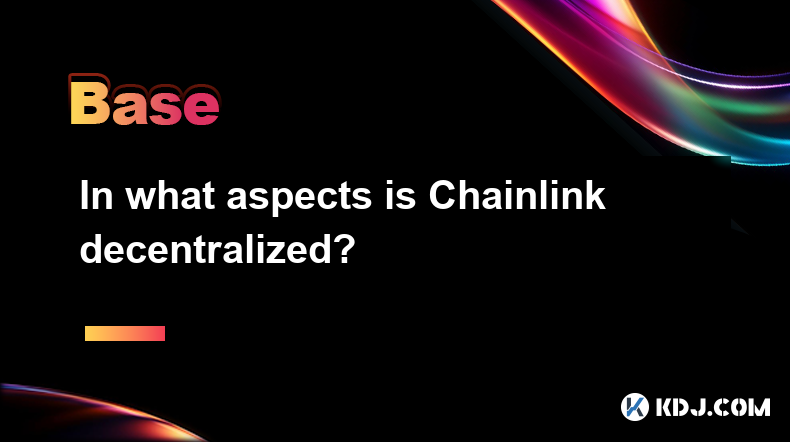
In what aspects is Chainlink decentralized?
Apr 02,2025 at 05:49pm
Chainlink is a decentralized oracle network that plays a crucial role in connecting smart contracts on blockchain networks with real-world data. Its decentralization is reflected in multiple aspects, ensuring the network's security, reliability, and integrity. This article delves into the various ways Chainlink achieves decentralization, including its n...
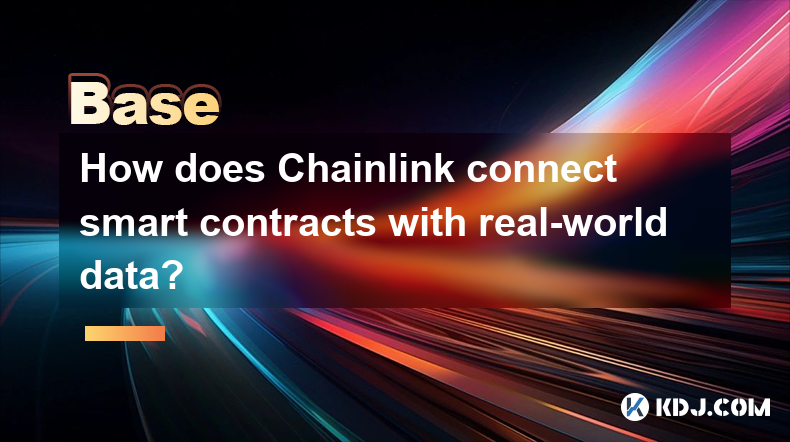
How does Chainlink connect smart contracts with real-world data?
Apr 02,2025 at 03:56pm
Chainlink is a decentralized oracle network that plays a crucial role in connecting smart contracts on blockchain platforms with real-world data. Smart contracts are self-executing contracts with the terms of the agreement directly written into code, but they can only interact with on-chain data. To access real-world data, such as stock prices, weather ...
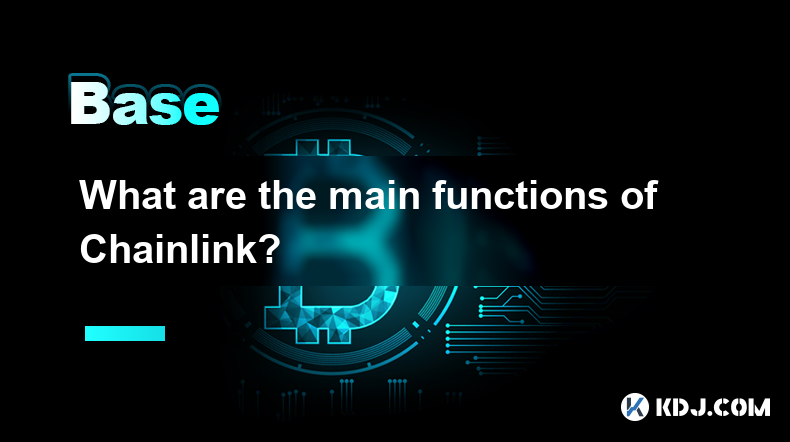
What are the main functions of Chainlink?
Apr 02,2025 at 11:49pm
Chainlink is a decentralized oracle network that plays a crucial role in connecting smart contracts with real-world data and external APIs. The primary function of Chainlink is to facilitate the seamless integration of off-chain data into on-chain smart contracts, enabling them to execute based on real-world events and information. This integration is v...

How does Chainlink work?
Apr 03,2025 at 01:50am
Chainlink is a decentralized oracle network that connects smart contracts with real-world data and external APIs. It plays a crucial role in the blockchain ecosystem by enabling smart contracts to interact with data outside their native blockchain environment. This connectivity is essential for smart contracts to execute based on real-world events and d...
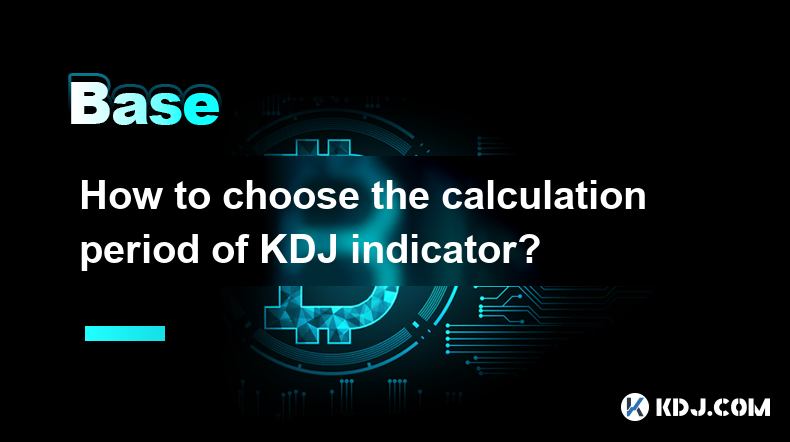
How to choose the calculation period of KDJ indicator?
Apr 02,2025 at 01:00pm
The KDJ indicator, also known as the Stochastic Oscillator, is a popular technical analysis tool used by cryptocurrency traders to identify potential buy and sell signals. The calculation period of the KDJ indicator is crucial in determining its effectiveness in predicting market trends. In this article, we will explore the factors to consider when choo...
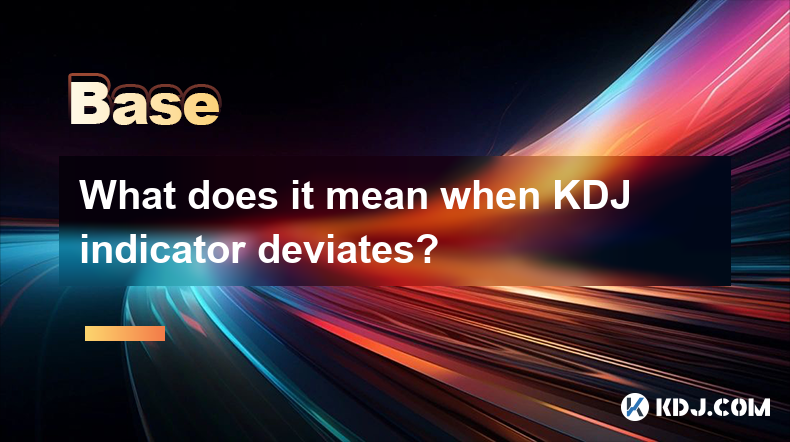
What does it mean when KDJ indicator deviates?
Apr 01,2025 at 03:08pm
The KDJ indicator, also known as the Stochastic Oscillator, is a popular technical analysis tool used in the cryptocurrency market to predict price movements. When the KDJ indicator deviates, it means that the current price of a cryptocurrency is moving away from its typical range, as indicated by the KDJ lines. This deviation can signal potential trend...

In what aspects is Chainlink decentralized?
Apr 02,2025 at 05:49pm
Chainlink is a decentralized oracle network that plays a crucial role in connecting smart contracts on blockchain networks with real-world data. Its decentralization is reflected in multiple aspects, ensuring the network's security, reliability, and integrity. This article delves into the various ways Chainlink achieves decentralization, including its n...

How does Chainlink connect smart contracts with real-world data?
Apr 02,2025 at 03:56pm
Chainlink is a decentralized oracle network that plays a crucial role in connecting smart contracts on blockchain platforms with real-world data. Smart contracts are self-executing contracts with the terms of the agreement directly written into code, but they can only interact with on-chain data. To access real-world data, such as stock prices, weather ...

What are the main functions of Chainlink?
Apr 02,2025 at 11:49pm
Chainlink is a decentralized oracle network that plays a crucial role in connecting smart contracts with real-world data and external APIs. The primary function of Chainlink is to facilitate the seamless integration of off-chain data into on-chain smart contracts, enabling them to execute based on real-world events and information. This integration is v...

How does Chainlink work?
Apr 03,2025 at 01:50am
Chainlink is a decentralized oracle network that connects smart contracts with real-world data and external APIs. It plays a crucial role in the blockchain ecosystem by enabling smart contracts to interact with data outside their native blockchain environment. This connectivity is essential for smart contracts to execute based on real-world events and d...

How to choose the calculation period of KDJ indicator?
Apr 02,2025 at 01:00pm
The KDJ indicator, also known as the Stochastic Oscillator, is a popular technical analysis tool used by cryptocurrency traders to identify potential buy and sell signals. The calculation period of the KDJ indicator is crucial in determining its effectiveness in predicting market trends. In this article, we will explore the factors to consider when choo...

What does it mean when KDJ indicator deviates?
Apr 01,2025 at 03:08pm
The KDJ indicator, also known as the Stochastic Oscillator, is a popular technical analysis tool used in the cryptocurrency market to predict price movements. When the KDJ indicator deviates, it means that the current price of a cryptocurrency is moving away from its typical range, as indicated by the KDJ lines. This deviation can signal potential trend...
See all articles
























































































